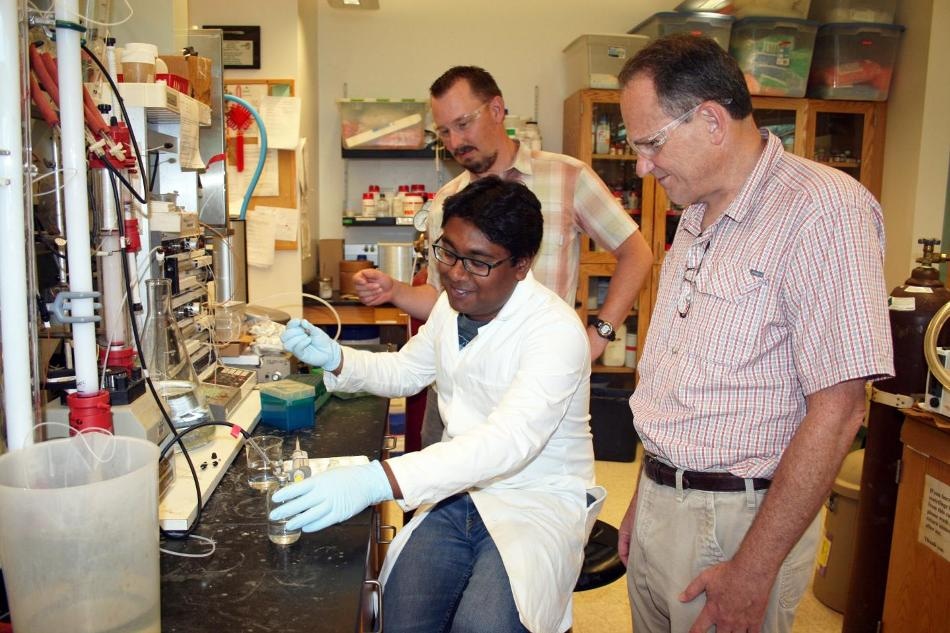Aug 25 2016
By way of a light-driven bacterium, Utah State University biochemists are a step closer to cleanly converting harmful carbon dioxide emissions from fossil fuel combustion into usable fuels. Using the phototropic bacterium Rhodopseudomonas palustris as a biocatalyst, the scientists generated methane from carbon dioxide in one enzymatic step.
 From left, Utah State University biochemists Sudipta Shaw, Derek Harris and Lance Seefeldt are part of the seven-institution, US Department of Energy Office of Science's Energy Frontier Research Center program-funded Center for Biological and Electron Transfer and Catalysis (BETCy) collaboration. The multi-institution team generated methane from carbon dioxide in one enzymatic step. (CREDIT: Mary-Ann Muffoletto/Utah State University)
From left, Utah State University biochemists Sudipta Shaw, Derek Harris and Lance Seefeldt are part of the seven-institution, US Department of Energy Office of Science's Energy Frontier Research Center program-funded Center for Biological and Electron Transfer and Catalysis (BETCy) collaboration. The multi-institution team generated methane from carbon dioxide in one enzymatic step. (CREDIT: Mary-Ann Muffoletto/Utah State University)
"It's a baby step, but it's also a big step," says USU professor Lance Seefeldt. "Imagine the far-reaching benefits of large-scale capture of environmentally damaging byproducts from burning fossils fuels and converting them to alternative fuels using light, which is abundant and clean."
Seefeldt and USU doctoral students Derek Harris, Sudipta Shaw and Zhi-Yong Yang, along with colleagues Kathryn Fixen, Yanning Zheng and Caroline Harwood of the University of Washington, and Dennis Dean of Virginia Tech, published findings in the 22 August 2016, online Early Edition of the Proceedings of the National Academy of Sciences.
The team's work is supported by a grant awarded through the U.S. Department of Energy Office of Science's Energy Frontier Research Center program to the Center for Biological and Electron Transfer and Catalysis or "BETCy." Based at Montana State University, BETCy is a seven-institution collaboration, of which USU is a partner.
"To our knowledge, no other organism can achieve what this bacterium has done with a single enzyme," says Seefeldt, professor in USU's Department of Chemistry and Biochemistry and an American Association for the Advancement of Science Fellow.
"Reducing," or breaking apart, carbon dioxide molecules requires tremendous energy, he says, because carbon dioxide is very stable.
"Use of phototrophs opens a new world of possibilities," says Seefeldt, who received USU's D. Wynne Thorne Career Research Award in 2012. "These kinds of bacteria could be used to make not only fuel, but all kinds of materials we use in everyday life, without the use of environmentally harmful energy sources. The future of this research is incredible."